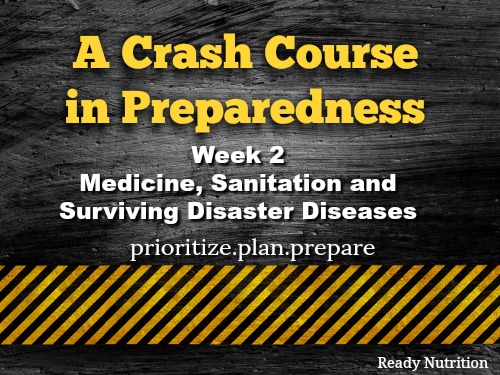A Crash Course in Preparedness – Week 2 – Medicine, Sanitation, and Surviving Disaster Diseases

Welcome back to week 2 in our Crash Course into Preparedness. Last week we discussed the basics of survival and gear needed for a short-lived event. One of the comments from last week’s class mentioned that it isn’t hard to prepare, you just have to start. I couldn’t agree more! My only addition I would make to this comment is in order to start you must prioritize your needs and know what you’re planning for. This week, we are taking the same concept from last week – prioritizing, planning and preparing to another facet of disaster planning and highlighting the more dirty side of preparedness – medical and sanitation needs.
Some of the greatest threats in an emergency occur after the disaster. Lack of accessible clean water following major disasters can quickly escalate and create secondary problems in a post SHTF situation. Additionally, those unsanitary conditions can exacerbate the spreading of diseases, infections and health risks. In this preparedness course, we will cover the most common issues that occur following a disaster that relates to hygiene, sanitary and medical condition.
Sanitation, good hygiene, and medical preparedness all go hand-in-hand. But as you will see after reading this guide, it takes a lot of planning and a lot of preparation. Simply put, there are many wrong turns a person could take in the aftermath of a storm and their health could suffer as a result. Therefore it is paramount that you understand the magnitude of these types of disasters and how to avoid them. As Ready Nutrition writer, Jeremiah Johnson noted in a recent article, “hygiene protects you from germs and diseases, as well as preventing the body from falling apart.” In the aftermath of disasters, this needs to stay at the forefront of our priorities.
…click on the above link to read the rest of the article…